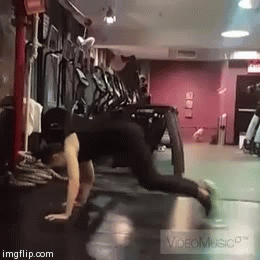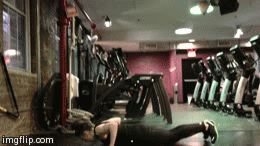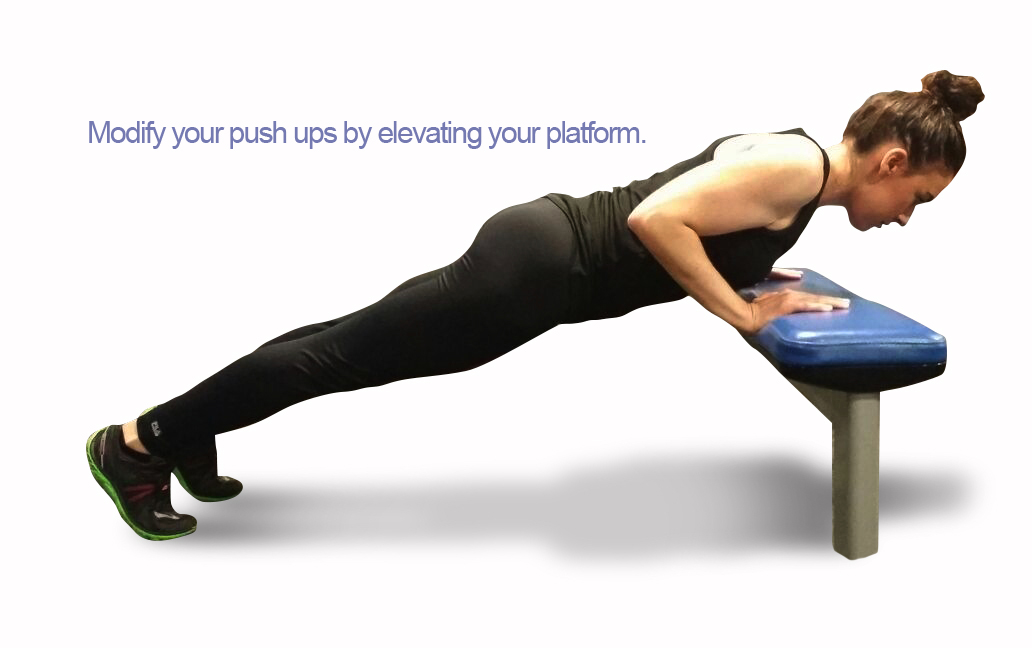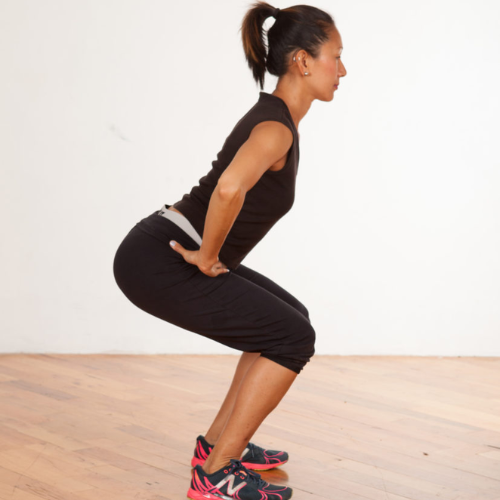I’m a one-on-one trainer at heart but I’ve been leading more classes lately to expose myself to groups and to tap into a different side of my teaching. One of the main reasons I stick to personalized fitness training is because I can focus on teaching form and technique to make sure my students move safely and in alignment. But as of late, I’ve struggled with coaching several people performing exercises in ‘eh’ form and most in terrible form. I cringe when I teach these classes and I have to force myself from stopping the class so I can show the proper form. Instead I try to emphasize what muscles to use and the importance of correct form. But I’m losing this battle and I’ve come to terms that I can’t force people (or their bodies) to cooperate in these classes.
The three exercises that are most commonly performed in poor form are burpees, push ups, and squats. And that’s not only in a class setting but also on the gym floor and in training sessions. They’re all challenging exercises that require full body strength and range of motion so it makes sense why they are often done incorrectly. Let me explain the proper form for each with the help of my student, Nadia, in the video clips and images below.
BURPEES: A dynamic and full body exercise that requires strength and cardio endurance. A burpee should only be done by someone who has already developed a foundation in strength and balance and can understand how the body should land and exert force.
Most common mistake: Jumping back and landing in plank. There is too much compression in the spine when jumping back into a plank pose. Repeated jump backs into plank can create lower back pain and possible spinal disc injury.
Fix it! Once you jump back into plank, quickly jump forward again. In the advanced version, once your feet are off the ground to jump back, bend your elbows right away to land your chest to the floor.

Modified Burpee

Advanced Burpee
PUSH UPS: A calisthenic exercise that requires a pressing up of the entire body weight in plank pose. The muscles in the upper body and core are essential for strength and stability. Another exercise that requires full body strength.
Most common mistakes: Those not strong enough to perform a push up will usually (a) sink their lower back which shows minimal or no core engagement (b) less than 45 degree bend in the arms which shows weakness in the upper body (c) bobbling of the head which shows they’re not moving from a solid foundation and just trying to get through the exercise.
Fix it! Nadia shows us a perfect push up below. If your upper body is not quite strong enough, drop your knees to modify. Another great alternative is to elevate your platform which will decrease the load you have to press up.

Perfect push up

SQUATS: A compound, full body exercise that requires strength primarily from the lower body and isometrically from the entire body especially the core and upper body. I was always under the impression that squats were only for the legs and glutes. But this exercise requires full body engagement and is used as a great assessment to show strengths and weaknesses in the body.
Most common mistakes: If the body is not fully engaged, you will most often see (a) knees collapsing towards each other (b) deep lower back arch (c) heels lifting up and knees falling forward past toes.
Fix it! There is no shame in using a stability ball for support in perfecting your squat. Place the ball against the wall and position your back against the ball. Align your feet hip distance, bend your knees to lower down into your squat. Make sure your knees don’t go past your shoe laces and your lower back keeps its natural arch and rolls against the curve of the ball. Using TRX is also a great way to work on your squats. The TRX straps assists to keep your spine erect while your lower body can focus on proper form. Using these modifications are great ways to build strength so eventually you won’t need them.

It’s not anyone’s fault that they can’t perform these 3 exercises in perfect form. They’re all really tough exercises. Most people don’t have enough knowledge or information on how to do so. Or more than likely, their bodies may not be able to move that way that day. So modify, move with consciousness and effectively. This will ensure a safe workout so you can continue your workouts…pain free!
